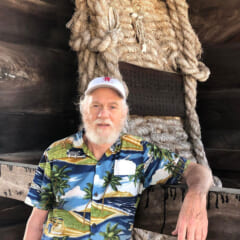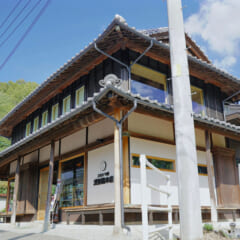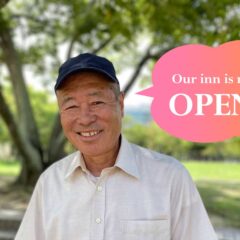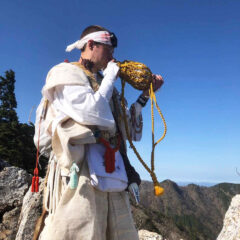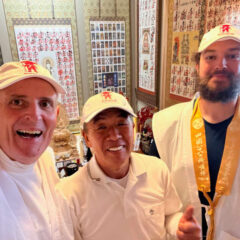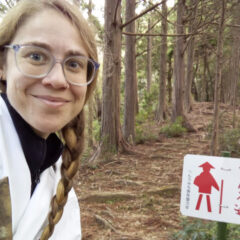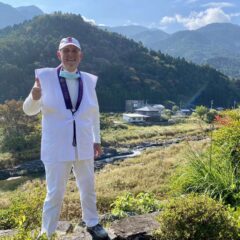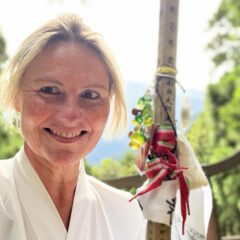My Shikoku Journey (16) by Billion, France
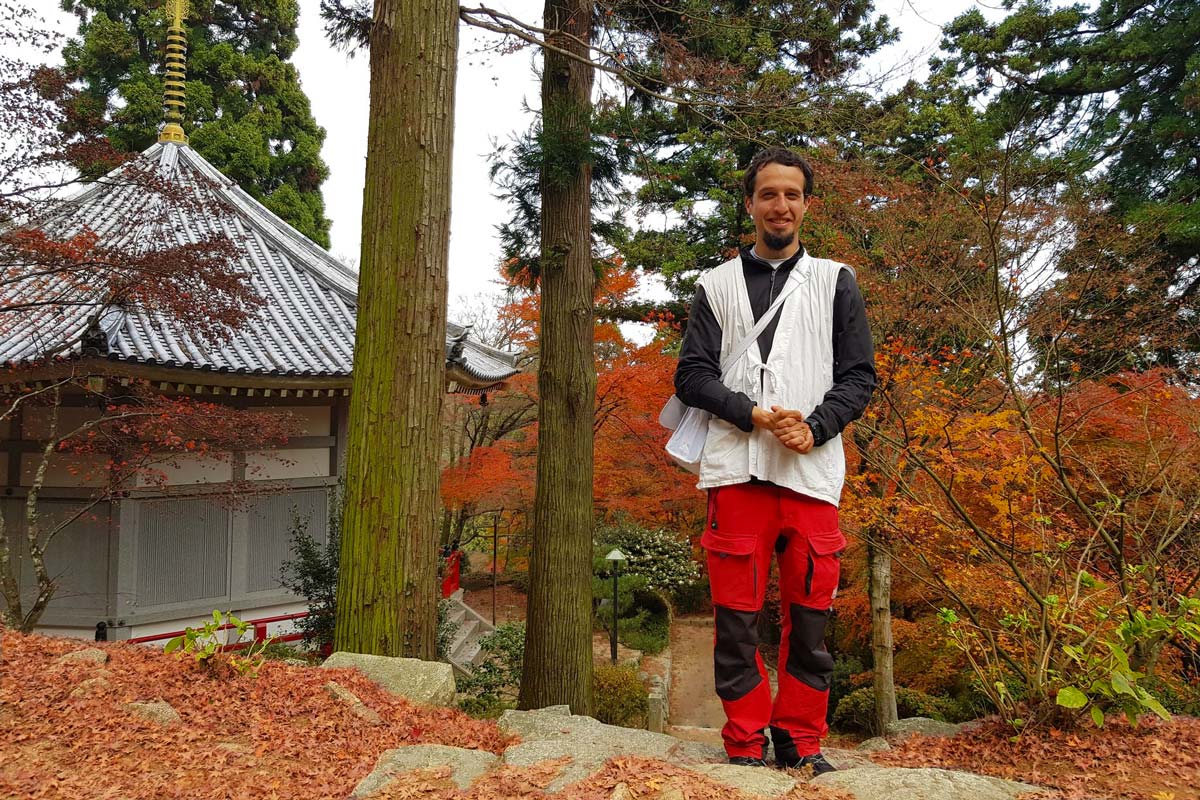
![]() Billion Grand Francois, France
Billion Grand Francois, France ![]() Complete Shikoku Pilgrimage
Complete Shikoku Pilgrimage
Between the temples of Shikoku.
The first time I learned about the pilgrimage of Shikoku was during my studies in sustainable tourism. Since I was a child, I always loved Japan, through stories of Miyamoto Musashi, or Oda Nobunaga for example. Those 88 temples looked like the perfect way to get to know more about the country I have been dreaming of visiting for so long. That first time was in 2016, and it wasn’t the perfect experience I pictured in my mind.
I was in the right place for sure. My body always vibrates in rural areas, whereas in big cities it dissonates. The trail took me to beautiful valleys, majestic mountains, peaceful temples and impressive coasts, but I didn’t enjoy it as I should have.
I was focused on the end, the number 108 for me as I visited the 20 side temples as well. I was planning to walk alone, and ended up sharing most of my walk with up to 7 pilgrims at a time! And at last, my Japanese was awful, 4 words total included さようなら (sayonara = good-bye) that I didn’t use. I couldn’t interact with the locals, it could have helped me understand my first lesson a bit better: There is more to find on Shikoku, between the temples. And back to temple 1, I wasn’t overjoyed, I didn’t reached a higher state, I was just looking at the mountains where Shousan-ji resides, thinking to myself: I should go around one more time.
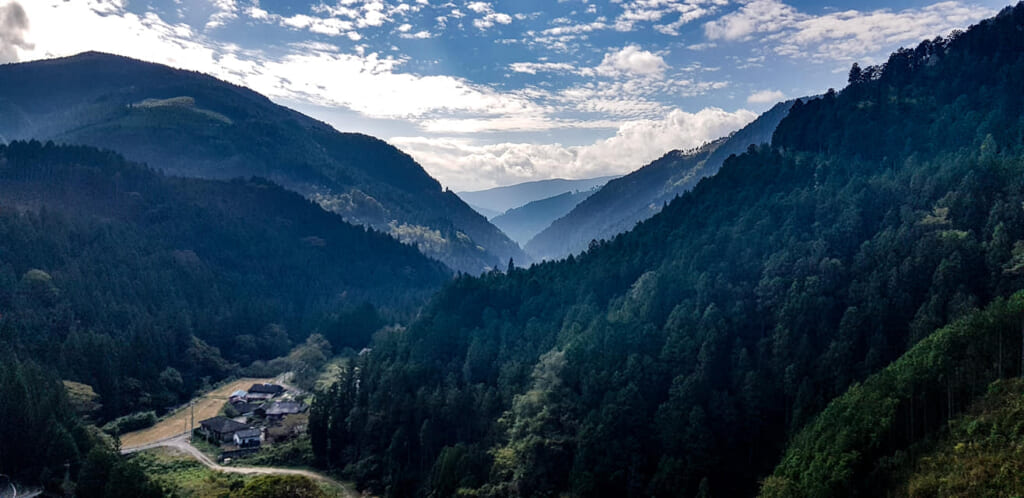
I came back in 2018, with 2 friends, ready to discover what I missed. And what struck me first was my deep attachment to the pilgrimage already. I discovered it when I understood that my friends were not pilgrims, but hikers. When I am praying at the temples, they are catching their breath, taking pictures, eating snacks, … And I can understand that religion is a personal matter, but as a 住職 ( Juushoku = priest ) said to me once : “I don’t care if you pray Buddha, Jesus or your cat ! What matters is that you share a spiritual moment with others. “And if you are not on a spiritual journey, the way can be too hard to handle. They gave up reaching Tokushima.
Being alone gave me the opportunity to learn more about myself, and the mistakes of the first tour and to learn the Japanese language. I wasn’t slower the second time (I usually walk fast and far), but I was more aware of my surroundings. I was finally able to see that I didn’t reach the final temple of the pilgrimage, “we” did. The volunteers cleaning, marking, changing the way. People working or volunteering in temples, keeping it active, clean, meaningful. Restaurant and accommodation owners, providing food and shelters. Even the ossetai tradition took another meaning, as one can easily assume that they are owed such treatment after all the hardship they endured. But when your mind is focused on the “we” more than on the “I”, then those offerings take another dimension.
2 things happened during that pilgrimage. First, is an introduction to a famous saying:一期一会( Ichigo-ichie), One time, one time only. I had to settle for an expensive accommodation in Uwajima, way out of my range, because everything was full. Someone saw my sorrow as I was walking in the streets, and invited me for dinner, a teppanyaki nearby. Soon, his friends would join us, and we spent hours talking, laughing, dreaming. He said that to me as we were parting ways late at night. Even if we find ourselves again, same place same time, it will never be the same experience. He said that 一期一会 encourages you to be your best self, and to fully appreciate every moment, every opportunity, every meeting, and, in my case, every pilgrimage. It became a main motto.
The second moment was in Senyu-ji, where I helped some volunteers for 10 days, working in the rice fields mainly. It is very hard to describe this first stay. I guess the universe was preparing me for this experience, and it became the beginning of a new adventure. As I said goodbye to Shikoku, overwhelmed by the inner path I took more than the kilometers I walked, I knew my next step: Give back to Shikoku.
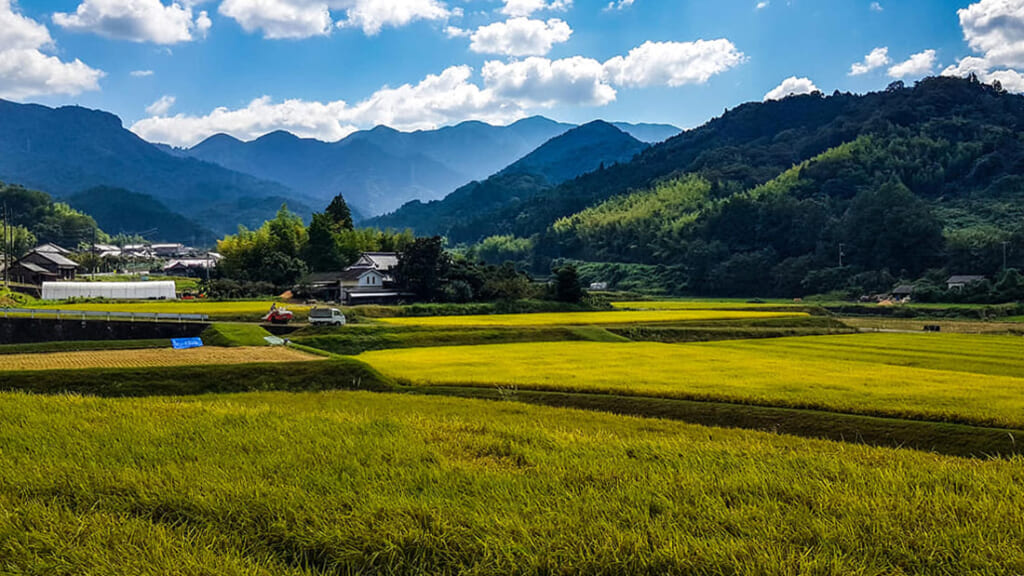
And this is the reason behind my third trip to Japan. I took a Working Holiday Visa and went back to the temple number 58, for what will become the most intense 4 months of my life. The ascetic training I underwent was at least 75 hours a week, with some religious activities, but also farming (the temple owns many rice fields, tea and oranges plantations, some vegetables), and hospitality in the temple accommodation. For a Japan lover, it was paradise. I was able to learn a bit of karate, charcoal making, calligraphy, farming techniques, art with the different Sensei coming to the temple, and to participate in events such as New Year’s celebration.
I also had time after dinner to exchange with pilgrims, and the idea of guiding the pilgrimage started to grow in me. I could help pilgrims not making the same mistakes I did, or at least help with the language barrier and the planning. And “thanks” to Corona, I was able to renew my Visa and stay a total of 27 month in Japan. Plenty of times to walk and bike the pilgrimage (guides are required to complete the pilgrimage 4 times) in these strange time, the island nearly empty, barely any pilgrim, and many accommodations closed, I realized how fragile the pilgrimage is, and how much the island depends on it. I had the opportunity to stay with a wonderful family in Ehime, working on nurturing the forest back to their original diversity. They couldn’t understand how hard it was to walk the pilgrimage 4 times. One step at a time, always smiling was my answer. I couldn’t phantom the work ahead of them, replanting the whole forest, changing the mentality of hundreds of people. One seed at a time, always smiling was their answer. I guess the teaching of Kukai are still vibrating on the island, and that’s what makes it so special. I have been to other places in Japan, working on the coast of Aichi, traveling to Kyushu, Shimane, Kyoto, Fujigoko, as far as Iriomote Island. But if I had to choose a place to settle down, it would always be Shikoku.

I wanted to be sure of that, so I went on a different pilgrimage, the Via Francigena in Europe, across 4 countries as well. And if the pilgrim family is still the same beautiful community, you will cross many places where you are only a tourist for locals. Shikoku is different. You are a henro, and everybody is walking with you. Everything makes sense.
There is another saying that I cherish. It comes from a catholic prayer dedicated to pilgrims, and can be translated like this:
Tout est néant, rien n’est vrai que l’amour.
All is emptiness, the only truth is love.
すべては無である. 愛ほど真実なものはない。
And there is plenty of love on Shikoku. And I am pretty excited to help people discover that truth.

